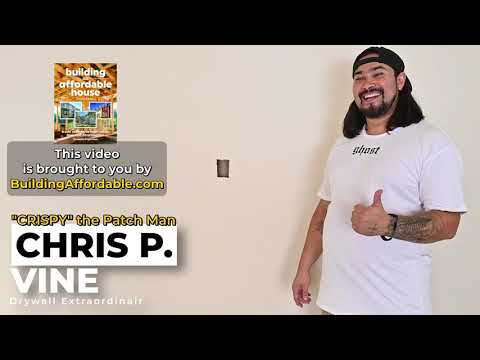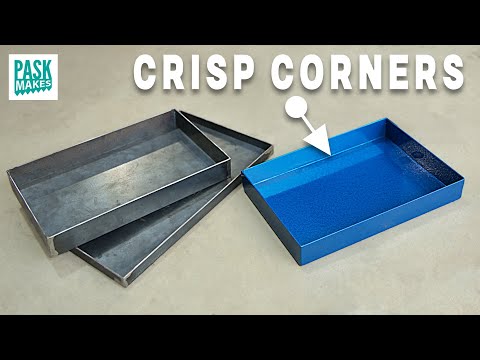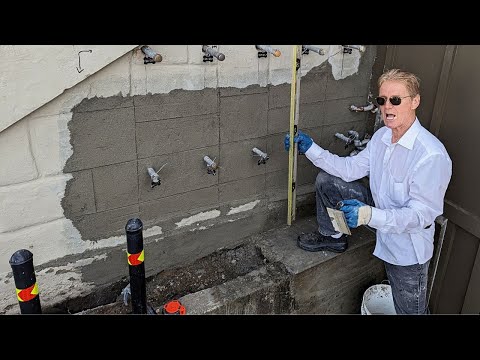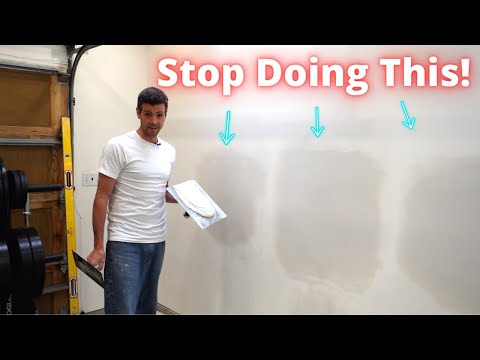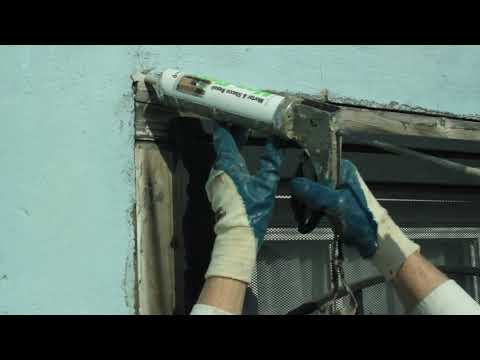Before jumping into the mudslinging, Matt talks a little about his hawk and trowel. He uses a 15-inch hawk and a 12-inch by 5-inch stainless steel trowel. The 5-inch trowel saves your knuckles when working in a corner. They also hold more mud for longer passes.
Hawk and trowel tip: use gravity
Another tip: use all-purpose mud for steel corner bead because it contains a lot of glue.
When loading the trowel, consider which edge to load (the knuckle edge or the digit edge) and which side of the trowel to load. In this case, Matt loads the left edge of the knuckle side because he'll apply mud to the right side of the opening, moving upward.
First pass: loading mud into the corner bead
Trowel up, arcing the trowel toward the opening as you lift it. Cover about 2-1/2 feet per swipe.
When you get to the top of the opening, don't continue to push up because you'll leave blobs on the horizontal bead. When you are about a foot from the horizontal, push the trowel down and from the side.
Notice that he loads the digit side of the blade for pulling down.
Second pass: feather the mud into the wall surface
Feather the edge: press hard on the back corner of the blade and bend the blade to the bead. Swipe smoothly up to get a feathered edge that requires little to no sanding.
Ideally, the feather swipe should be s single pass. If you go over it repeatedly, you'll pull mud out of the corner bead, leaving the corner bead hollow.
Along the top of the opening, push the trowel from right to left on the right side and then left to right on the left side, again to avoid leaving big blobs on the bead.
He likes to work his way up the other side, too, to keep the flow.
Feather across the top and up the side.
The third pass is a finishing one
A smooth pass removing mud from the corner and filling slightly. Don't pass over the bead repeatedly on this finishing pass because you'll remove mud from the corner bead.
Two Reasons to not fill the light switch box with mud
- You can electrocute yourself
- It sucks for the electrician
It's good to carry a 6-inch knife, too, for small sections that need more detail.
For the 4-inch edges of openings
Load up the beads on each side of the section with mud.
Swipe a rough pass before the feathering one: Angle the blade a little as you swipe up each side, leaving a bit of a hump in the center.
Now, on the finish pass, mud will not spill off the sides (as much).

